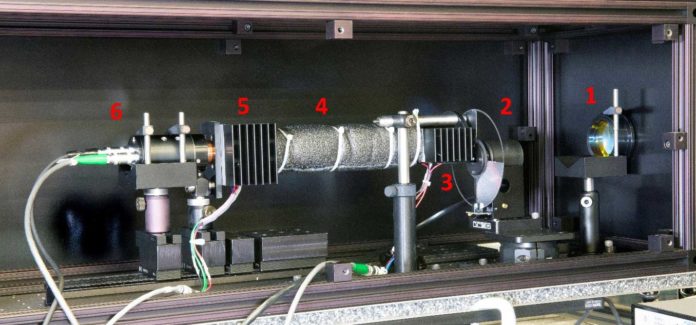The most common way to check if someone has a fever without a thermometer is to feel the forehead or neck with the back of your hand. Our skin is a good detector of heat and we interpret the average molecular motion within an object as a feeling that the object is hot or cold. However, our skin does not always give us consistent measurements of heat energy.
For this, we need special instruments which can accurately measure temperature, like a thermometer. But, more sophisticated and highly calibrated, research-grade “non-contact” thermometers – which measure the infrared (heat) radiation given off by objects without touching them – are critically important to many endeavors besides healthcare.
Now, scientists at the National Institute of Standards and Technology (NIST) have made a breakthrough in the medical industry by developing a portable, remarkably stable standards-quality radiation thermometer.
This Ambient-Radiation Thermometer (ART) implements the size-of-source effects (SSE) reduction designs of visible and near-infrared radiation thermometers. It is 60 cm (24 in.) long and capable of measuring temperatures to a precision of within a few thousandths of a degree Celsius. Most important, It can measure temperatures between -50 ˚C (-58 ˚F) to 150 ˚C (302 ˚F). The corresponding infrared wavelengths are from 8 to 14 micrometers (millionths of a meter), which is a sort of thermodynamic sweet spot.
NIST physicist Howard Yoon, who created the thermometer design and directed the project said, “All temperatures are equal, but some are more equal than others. That 200-degree span covers nearly all naturally occurring temperatures on Earth. If you make a big impact in measuring objects in that range, it really matters.”
This Ambient-Radiation Thermometer (ART) is fitted with a suite of interior thermometers that constantly gauge temperatures at different points in the instrument. Those readings are sent to a feedback loop system which keeps the 30 cm (12 inches) cylinder containing the detector assembly at a constant temperature of 23 ˚C (72 ˚F).
After it has been calibrated against standards-grade contact thermometers, the instrument can remain stable to within a few thousandths of a degree for months under continuous operation. That makes the system very promising for applications that involve remote sensing over long periods.
Yoon said, “Imagine being able to take the NIST design out in the field as traveling radiation thermometers for accurately measuring variables such as land- and sea-surface temperatures. It could serve as a trustworthy method of calibrating satellite IR sensors and validating the huge weather science programs that are used to predict, for example, the paths and strengths of hurricanes. Its lower range of -50 ˚C (-58 ˚F) makes it suitable for monitoring the temperature of ice over polar regions, typically in the range of -40 ˚C (-40 ˚F) to -10 ˚C (14 ˚F).”
Gerald Fraser, chief of NIST’s Sensor Science Division, said that “Yoon’s innovation makes non-contact thermometry competitive with the best commercial contact thermometers in accuracy and stability in a temperature range that humans experience daily. This enables many new opportunities in product inspection and quality control and in defense and security where conventional contact methods are impractical or too expensive.”
The study is published in the journal Optics Express.
